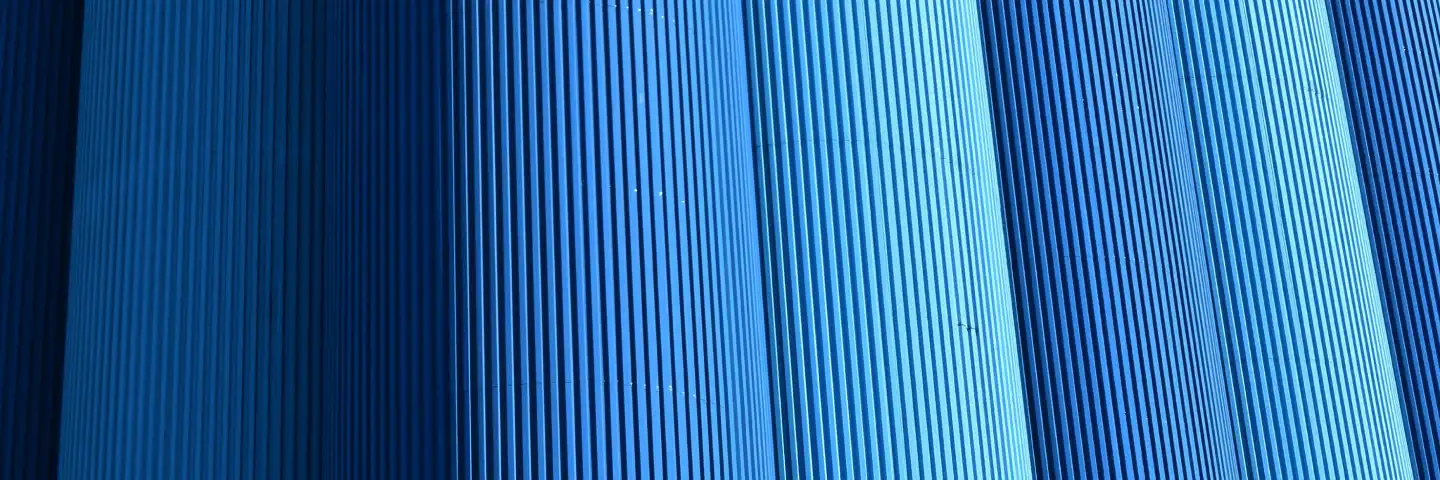
GitHub is a code repository used to host and share projects. GitHub facilitates collaborative work by letting multiple people work on the same project from anywhere in the world, and version control allows developers to store, manage, and track changes to their code.
For analysts, it's also a great opportunity to
Connect with the community,
Showcase your skills and
Potentially secure your next big role
In this blog post, I’ll be presenting ideas, tips and resources to help you build a compelling GitHub portfolio that stands out from the crowd.
How to Get Started with GitHub
First, create a free account on GitHub. Once your account is set up, you can begin by creating a new repository, which is essentially a project's home on GitHub to store documents, code, images, and more.
Of note, GitHub is a public site so please don’t share sensitive information like company data, passwords, or login credentials. If you do please consider the credentials as compromised and seek to change them as soon as possible.
One of the key features of GitHub is version control. This means that changes to documents are monitored, tracked and can be reverted to the previously uploaded state. This then avoids the typical file naming convention chaos of "Script v1", "Script v2", etc. replacing these files with just the latest version of the file but the historical versions are available if needed.
There are a few ways to add code to GitHub:
Applications such as GitHub Desktop which will manage syncing files between GitHub and your local machine
A built-in feature such as the Git integration for Visual Studio Code
Using the browser to upload files on GitHub.com
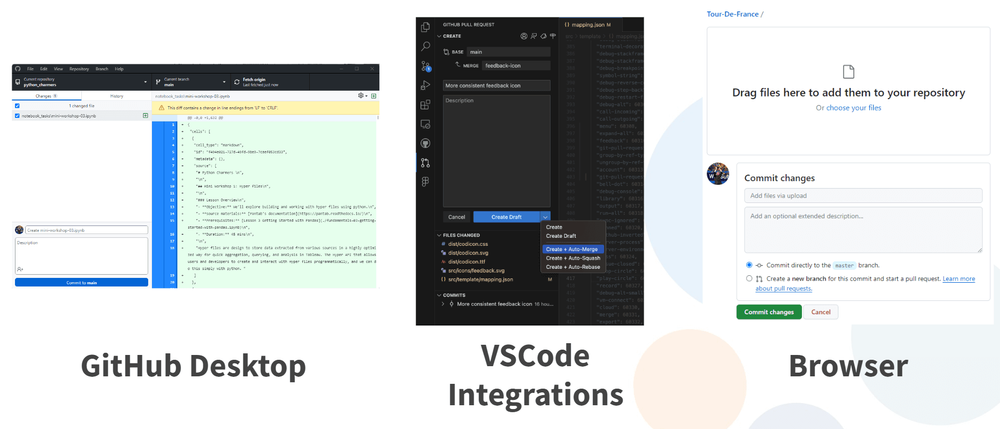
And of course, using the terminal and the language Git, which is helpful if you need to automate pushing and pulling code to another machine.
The Value of a Readme
The heart of a GitHub portfolio lies in its README files. A README is a markdown document that is displayed on the screen when a user visits your project repository. A well-crafted README introduces your projects and tells the story of your skills, experience, and the unique perspectives you bring to your work. It's your place to communicate what you've built, the problems you've solved, and the impact of your work.
You may have a dashboard on Tableau Public where it's easy to rate your design and UX ability but what about:
Your motivations for building the viz?
The data prep and transformation?
Accessibility considerations?
A README can help you display these skills and make your work incredibly accessible to anyone viewing your portfolio.
Before: A GitHub Repository Without a README

After: The Value a README Can Bring to a GitHub Repository
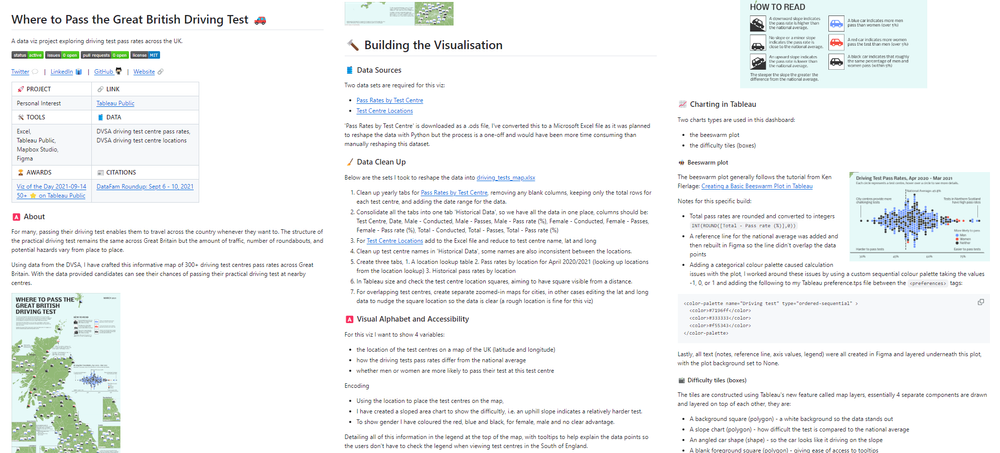
Template READMEs are available for different projects. However, you can use any existing README as a template. Viewing the file on GitHub.com you can see the rendered version but if you select “Code” you’ll see the markdown text behind it – this is a great way to learn tricks with markdown.
I would always recommend you build README files on GitHub.com as the interface allows you to switch between the markdown code and preview how it will appear on the screen.
3 Types of Projects To Consider for Your GitHub Profile
Visualisation Project Write-up
When building a project most people will just see the final stage, however, there are a ton of skills you apply from planning your build, to reshaping the data, to design considerations. For my Tour de France project, I put a lot of work in and wanted to display a wide range of skills I had applied to bring this dashboard to life.
In this README I talk about why I built the dashboard but also:
The data sets and how I reshaped them with R
Design choices for how I’ve picked colours
How I’ve made the dashboard accessible
Implementing the Coxcomb chart type in Tableau
Layering Figma images into the visualisation
Here I’ve elevated the project from a Tableau dashboard to showcasing a range of skills: technical, design and UX. Far more than any potential recruiter would notice by just looking at the dashboard.
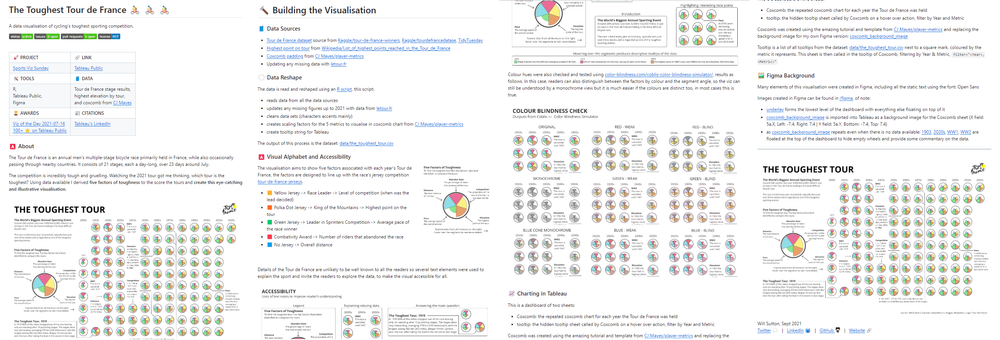
Solution Repository
Weekly challenges and case studies are a great way to improve your skills with coding or a new tool but can also be a great talking point for your portfolio. I wanted to improve my skills with Python, so I started completing Preppin’ Data challenges with Python, these are data prep challenges designed for Tableau Prep but can be completed with other tools.

The README becomes a list of the Python solution scripts for each challenge. This is nice for proving you’ve completed the task but the question comes “So what did you learn?”
With a few improvements, you can make these solutions incredibly valuable.
Commonly used code snippets
An index of functions used in challenges
Difference in approaches for different tools

I wish I had done this sooner! Kelly Gilbert inspired me to improve my README after seeing the value these solutions can bring. I was able to reuse sections of these solutions saving time me time tackling future problems.
Blog Post / Documentation
An example of this is the Tableau Public API repository. This is an API that pulls together the information for Tableau Public, it was undocumented, and a few people in the community had blog posts or projects using it, so I wanted to create a centralised document that gathered up everything available about the API:
Sample calls to API
Projects built with the API
Walkthroughs for using the API
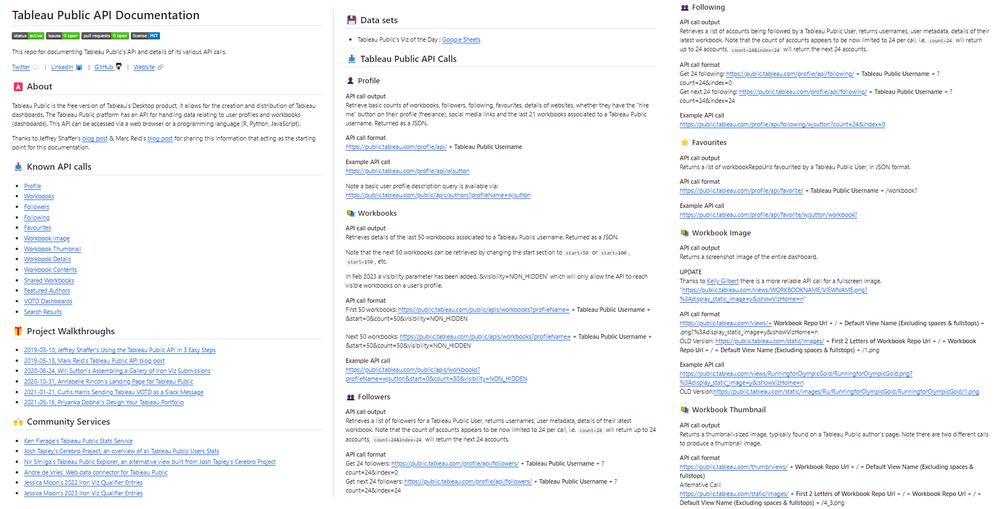
You can almost think of this as a webpage before you’ve made a website. Along a similar line when we were preparing the GamesNightViz community project we didn’t launch with a website but instead with a GitHub repository, with the README being vital for helping participants find the challenges and the datasets.

Of note, you also can host a website for free on GitHub Pages.
The Profile Readme: A Place to Bring All the Portfolio Together
A GitHub profile README is a special README that is shown with your GitHub profile. It’s a perfect place to display your favourite projects from GitHub and beyond, as well as the opportunity to talk about your career to date.
I’d highly recommend bringing those projects that aren’t currently on GitHub to your profile README to help show your skills and guide any potential hiring managers. This includes but is not limited to:
Visualisations from Tableau Public or Power BI
Data Prep workflows built in Alteryx, Tableau Prep, etc.
Blogs, tutorials or YouTube videos
For my profile README I’ve designed it as if it was a 1-page portfolio website. For this, I took inspiration from websites that appealed to me, a created a rough framework:
Hero Section – Who you are and what you do (in one line)
Your Top 3 Key Skills – Displayed through your portfolio
About Me – A piece about your background, typically LinkedIn-style
Your Clients – Who you’ve worked for or with in the past
Awards & Certification – Achievements, completed courses, Credly badges
Contact Me – Links to where you can be reached
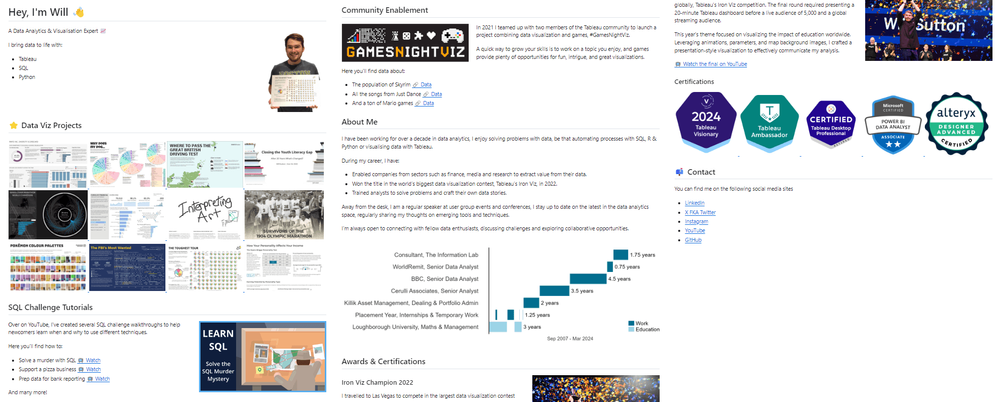
Conclusion
As you build your GitHub portfolio, remember it's a continuous process. It should evolve as you grow professionally, reflecting new skills, projects, and accomplishments. Start with what you have and gradually build a portfolio that represents your skill set.
